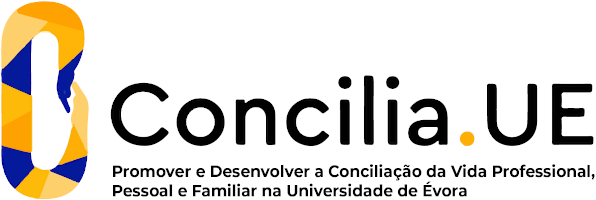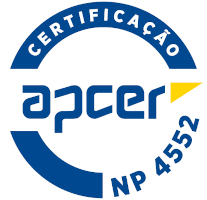2025
Numerical Analysis I
Name: Numerical Analysis I
Code: MAT14224L
6 ECTS
Duration: 15 weeks/156 hours
Scientific Area:
Mathematics
Teaching languages: Portuguese
Languages of tutoring support: Portuguese
Regime de Frequência: Presencial
Presentation
Numerical analysis refers to a series of computational tools for solving mathematical problems, the exact solution of which is difficult or even impossible from an analytical point of view. The CU seeks to introduce students to the most important topics of the theory of numerical methods.
Sustainable Development Goals
Learning Goals
Introduction to the theory of numerical methods with an emphasis on applications.In addition to learning theoretical results that allow them to develop the capacity for generalization and mathematical abstraction, it is intended to familiarize students with the fundamentals of the development of computational tools, which, in turn, will allow them to efficiently formulate and solve practical problems.
Contents
- Floating point systems, errors, conditioning, convergence, stability.
- Nonlinear equations. Methods of bisection, Newton, fixed point iteration.
- Systems of linear equations. Direct methods: Gauss elimination, triangular factorizations, inverse matrix and determinant calculation. Matrix norms and condition numbers. Iterative methods: Jacobi, Gauss-Seidel, conjugate gradients.
- Systems of nonlinear equations.
- Interpolation and approximation of functions. Lagrange, Newton, Hermite polynomials, Chebyshev interpolation, splines, least squares approximation.
- Numerical derivation and integration. First and second order derivatives. Newton-Cotes quadrature rules, composite rules.
- Eigenvalues and eigenvectors. Localization and calculation.
- Implementation of some algorithms in an interactive numerical and symbolic calculation system.
- Nonlinear equations. Methods of bisection, Newton, fixed point iteration.
- Systems of linear equations. Direct methods: Gauss elimination, triangular factorizations, inverse matrix and determinant calculation. Matrix norms and condition numbers. Iterative methods: Jacobi, Gauss-Seidel, conjugate gradients.
- Systems of nonlinear equations.
- Interpolation and approximation of functions. Lagrange, Newton, Hermite polynomials, Chebyshev interpolation, splines, least squares approximation.
- Numerical derivation and integration. First and second order derivatives. Newton-Cotes quadrature rules, composite rules.
- Eigenvalues and eigenvectors. Localization and calculation.
- Implementation of some algorithms in an interactive numerical and symbolic calculation system.
Teaching Methods
The teaching process will be organized based on theoretical and practical-laboratory sessions. Theoretical sessions are predominantly given on the board and with the projection of resources with JupytherLab. Theoretical concepts are illustrated by practical examples. In practical-laboratory classes, the active use of computational resources and the implementation of the most important numerical algorithms are foreseen with Python language through JupytherLab.
Assessment
Continuous Assessment (preferred)
2 Tests (1h30 each, minimum average grade 7, 5):
? 30 min written part (minimum grade 2.5)
? 1h lab-based part (minimum grade 5)
+ Weekly laboratory assignments (minimum average grade 7)
Requirements: ?7,5 in each test (?2.5 written + ?5 lab)
+ ?7 average in lab assignments
Final Grade = 0.7 × average of tests + 0.3 × average of lab assignments
Final Exam (2h30?, total minimum grade 7.5):
45 min written part (minimum grade 2.5) +
+ 1h45 lab-based part (minimum grade 5)
+ Weekly laboratory assignments (minimum average grade 7)
Requirements: ?7 total minimum in the exam (?2.5 written + ?5 lab)
+ ?7 average in lab assignments
Final Grade = 0.7 × exam + 0.3 × average of lab assignments
- Resit / Special Exam Periods
Exam (total minimum grade 7.5):
? 45 min written part (minimum grade 2.5) + ? 1h45 lab-based part (minimum grade 5)
+ Laboratory mini-project (if the minimum grade 7,5 is achieved in first part)
Requirements: ?7,5 total minimum in the exam (?2.5 written + ?5 lab) +
?7 in the mini-project
Final Grade = 0.7 × exam + 0.3 × mini-project
To pass the course unit, the student must obtain a final grade ? 10.
2 Tests (1h30 each, minimum average grade 7, 5):
? 30 min written part (minimum grade 2.5)
? 1h lab-based part (minimum grade 5)
+ Weekly laboratory assignments (minimum average grade 7)
Requirements: ?7,5 in each test (?2.5 written + ?5 lab)
+ ?7 average in lab assignments
Final Grade = 0.7 × average of tests + 0.3 × average of lab assignments
Final Exam (2h30?, total minimum grade 7.5):
45 min written part (minimum grade 2.5) +
+ 1h45 lab-based part (minimum grade 5)
+ Weekly laboratory assignments (minimum average grade 7)
Requirements: ?7 total minimum in the exam (?2.5 written + ?5 lab)
+ ?7 average in lab assignments
Final Grade = 0.7 × exam + 0.3 × average of lab assignments
- Resit / Special Exam Periods
Exam (total minimum grade 7.5):
? 45 min written part (minimum grade 2.5) + ? 1h45 lab-based part (minimum grade 5)
+ Laboratory mini-project (if the minimum grade 7,5 is achieved in first part)
Requirements: ?7,5 total minimum in the exam (?2.5 written + ?5 lab) +
?7 in the mini-project
Final Grade = 0.7 × exam + 0.3 × mini-project
To pass the course unit, the student must obtain a final grade ? 10.
Teaching Staff
- Marília da Conceição Valente Oliveira Pires [responsible]





















